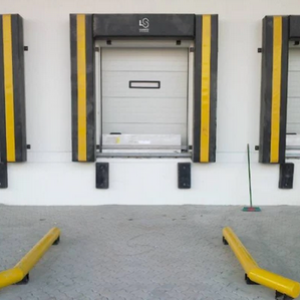An introduction to shipping alliances, and the benefits for freight forwarders and end customers
When you are considering your freight options for getting shipments from one part of the world to another, you might come across mention of global freight and shipping alliances, and wonder exactly what these “alliances” are. Further to the point, why should you – as an end customer – care?
The term “shipping alliance” refers to when multiple ocean carriers enter into a cooperative agreement together.
Forming a shipping alliance – or an “ocean alliance”, as it is also often called – enables the cooperating carriers to make their prices more competitive and broaden their service coverage.
How do shipping alliances work?
A key feature of how global freight and shipping alliances work is that the carriers making up the alliance commit to vessel-sharing arrangements, so that they can cover the largest possible amount of the shipping market. Or to put it a simpler way, carriers essentially combine their cargo ship fleets within the same alliance, and gain access to vessels owned by other carriers in the alliance.
The creation of alliances thereby allows the participating carriers to utilise fleet space with a level of efficiency that wouldn’t be possible if they simply operated their own fleets separately.
As you might imagine given the above, there are various ways in which the carriers participating in an alliance closely cooperate, including in such areas as vessel assignment, stowage planning, problem-solving, and scheduling.
The partners in an alliance also typically discuss such matters as operational efficiencies, capacity, types of fuel used, and environmental issues. Alliance agreements do not, however, cover the subjects of joint asset ownership, marketing, or sales.
What are the major shipping alliances today?
Recent years have seen the formation of three major shipping alliances that include the world’s top 10 shipping lines. These include:
- The 2M alliance, which was formed in 2015 and includes MSC and Maersk as members. However, it should be noted that this alliance will come to an end in 2025.
- Ocean Alliance, which was formed in 2017 and consists of the carriers CMA CGM, Cosco Group, OOCL, and Evergreen.
- THE Alliance, which was launched in 2017, and counts among its members Hapag Lloyd, NYK, Yang Ming, MOL, K-Line, and HMM.
What benefits do such global freight and shipping alliances bring to end customers?
The existence of shipping alliances can help deliver a variety of advantages for freight forwarders and the end customers who rely on freight services.
As aforementioned, the formation of ocean alliances can greatly help to lower freight rates and make broader coverage possible. This, in turn, can help freight forwarders to pass on savings to their customers, at the same time as offering better-quality services.
A carrier being a member of an alliance can also help boost the level of security it is perceived to offer. Alliances typically put in place contingency plans to safeguard partners in the event of a member of the given alliance facing financial problems. Such contingency planning also allows partners to prepare for the risk of adverse events such as natural disasters, pandemics, and economic recessions.
Membership of global freight and shipping alliances, then, can present significant benefits to not only the member carriers themselves, but also the freight forwarding companies and end customers that turn to them.
If you would like to discuss your own freight requirements with our team here at KTL UK, so that we can devise the solution that constitutes the best match to your needs at the right price, please don’t hesitate to contact our experts today.





